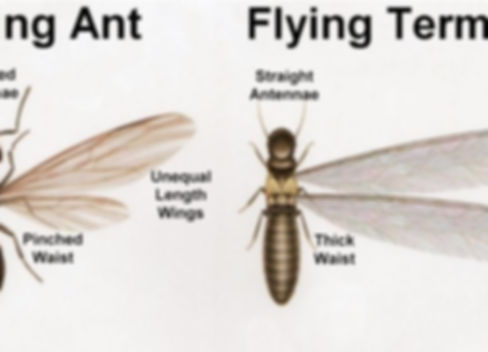
Signs of Termites
If any of the things detailed below sounds like something you are currently dealing with in your home, do not hesitate to contact us.

Drywood Termite
Drywood Termites excrete droppings and kick them out of tiny holes. The droppings often resemble coffee grounds. These pellets build up around baseboards, windowsills, furniture and other wooden objects. Since Drywood Termites live inside the wood these droppings are often the most common sign of infestation.
Subterranean Termites
Pencil sized mud tubes are the preferred method of travel for Subterranean termites. Subterranean termites require high levels of moisture to survive, so they protect their bodies by hiding inside wood or traveling inside mud tubes to infest structures. Common places to find these include on foundation walls in garage or or the exterior, as well as on baseboards inside your house.


Termite Swarmer
Termite swarmers, also known as alates, are winged adult reproductive members of a termite colony. During certain cycles of the year, termite colonies produce “swarmers" that leave their current colony to find mates to form new colonies.
Swarmers typically only emerge at certain times of year. However, their presence inside your home can be a surefire sign that termites have taken up residence within your walls and may be expanding their reach.
Ants also sometimes have wingsThe best way to tell the difference between ants and termites is to look for a pinched waist and wings of unequal length. Those two characteristics along with bent or elbowed antennae, equal flying ants. If you see a flying insect with wings of equal length and a waist that remains thick (does not narrow) and straight antennae, you most likely have termites.
© 2015 Vista Termite